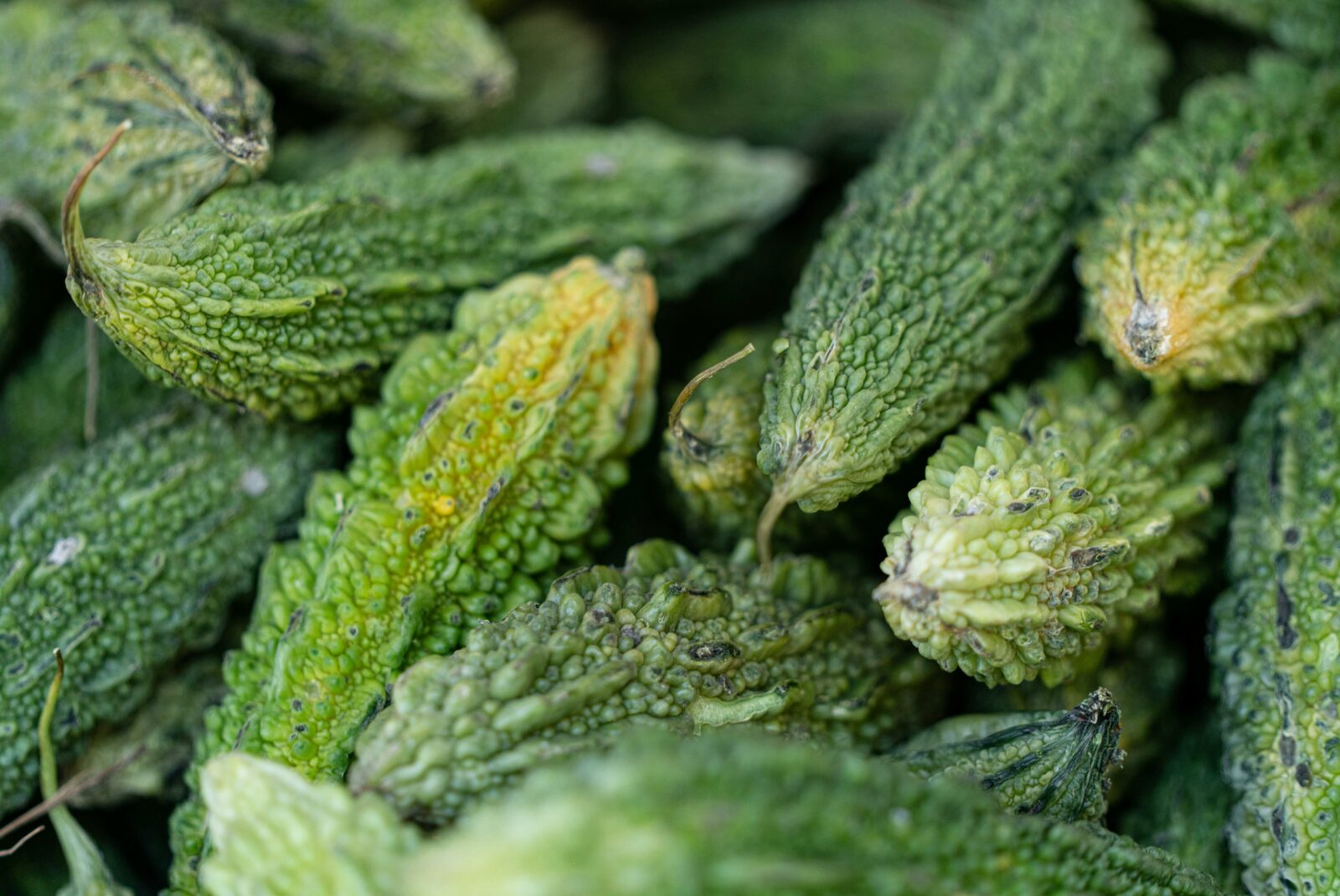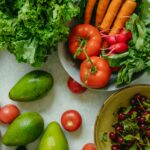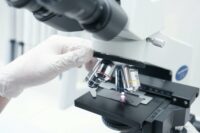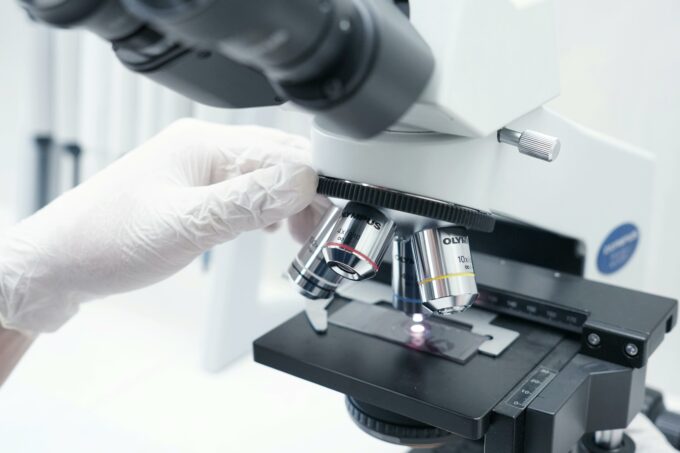Diabetes mellitus (DM), Starvation in the Midst of Plenty is one of the oldest known human disease currently affecting about 10.5% of the adult population (20-79 years) , with almost half unaware that they are living with the condition. By 2045, the International Diabetes Federation (IDF) projections show that 1 in 8 adults, approximately 783 million, will be living with diabetes, an increase of 46%. This disease is the most common metabolic disorder in humans and it is characterized by hyperglycemia, due to relative or absolute lack of insulin, the insensitivity of insulin or both. DM is classified into type 1 or insulin-dependent DM (IDDM) or type 2 or non-insulin dependent DM (NIDDM) or T2DM. Type 1 DM represents about 5-10% of all cases of DM whereas T2DM accounts for 90-95% of diabetes. Type 1 DM is characterized mainly by auto-immune-me diated destruction of beta cells of the endocrine pancreas leading to reduced insulin secretion.
This form of DM is prevalent in young children. On the other hand, T2DM is characterized by insulin resistance and relative insulin deficiency and it is due to sedentary life style, genetic disposition, obesity, human behavior and environmental factors. In addition, DM have been classified as MODY (maturity-onset diabetes of the young) and LADA (latent auto immune diabetes in adults). Both forms of DM can lead to such long-term complications such as neuropathy, retinopathy, cardiomyopathy, nephropathy, exocrine gland insufficiency and several other complications and eventually to death. Type 1 DM is treated mainly with insulin whereas T2DM is controlled by hypoglycemic drugs, regular exercise, general change in life style habits and diet including some plant based food.
The plant kingdom is a good potential source for the discovery of novel medicines to treat numerous diseases including DM. Currently, about 400 plants are evaluated extensively for the treatment of diabetes throughout the world. In many parts of the world, especially in developing countries, this may be the only available form of therapy for the treatment of diabetic patients. One such plant is the Momor dica charantia (family name: Cucurbitaceae), nature’s own cure for DM. M. charantia has been extensively studied and used as an anti-viral, anti-bacterial agent and more to treat a num ber of infections and diseases. These include DM, indigestion, fever, skin disease, HIV, viral and bacterial infections, hypertension, reduced cholesterol and inflammation, detoxification of the body, expelling worms from the body, balance certain hormones in the body, enhances immunity, promotes milk flow, prevents different tumors and several other reported medicinal benefits.
This is article however is concerned specifically with the medicinal chemistry of M. charantia and its extracts and active constituents to treat DM. Some common names of M. charantia include bitter melon, papilla, bitter gourd, corrila or karela, balsam apple and several other common names. Momordica charantia is cultivated in many damp and wet tropical countries of the world including parts of South America and the Amazon basin including Brazil, Guyana and the Caribbean, East Africa and Asia including India, China, Philippines, Pakistan, Nepal and Sri Lanka. M. charantia is harvested both as food and as a medicine. M. charantia is known for its very bitter taste and this is found in the leaves, the seeds, the fruits, the stems and other parts of the plant. It has been used by the public to treat DM. People eat the fruit raw, boil or cook the different parts or drink the pulp of the fruit as a juice. Over the years several scientists have tried to isolate the various active chemical structures of momocharin which is believed to possess insulin-like chemical structure and anti-diabetic properties.
Currently around 228 different medicinal compounds have been isolated from the stems, leaves, and seeds of the plant. These different compounds have been classified into different chemical types. These includes proteins, triterpenes, lipids, inorganic compounds, phenylpropanoids, carotenoids, steroids, alkaloids, monoterpenes, alkene, carbohydrates, benzanoids, alkanol and many other unknown structures. The plant has many different chemical components, which help medicinally either alone or when combined. One of the hypoglycemic components is a steroid saponin called momocharin (charantin) with insulin-like chemical effect. It is the belief that charantin is the active hypoglycemic agent of M. charantia and it shows similarities in the chemical structures of momocharin and other commercially available hypoglycemic drugs (glibenclamide, gliclazide Glipizide, Metformin hydrochloride, Pioglitazone hydrochloride) used in the treatment of T2DM. The hypoglycemic action of M. charantia and its isolated components may be due to its insulin-like structure.
Nutrient Profile
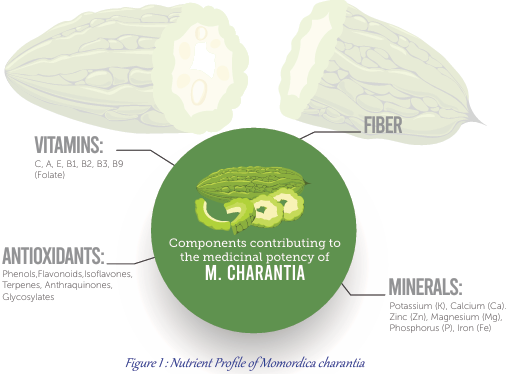
M. charantia is a potent nutrient-dense plant composed of an elaborate range of beneficial compounds and elements. The powerful assembly of bioactive compounds, vitamins, minerals, and antioxidants within this gourd all give rise to its remarkable ability in treating a wide range of illnesses. Bitter melon contains large amounts of vitamins C, A, E, B1, B2, and B3, as well as vitamin B9 (folate), making this vegetable a healthful addition to any diet. Regarding caloric content, the values for the leaves, fruit, and seeds are approximately 213, 242, and 177 Kcals per 100 g. Bitter melon is also rich in many minerals including potassium (K), calcium (Ca), zinc (Zn), magnesium (Mg), phosphorus (P), and iron (Fe), and is an excellent source of dietary fiber. A diet rich in vitamins, minerals, and fiber can help promote the overall health and well-being of the general population, especially those at risk of developing metabolic disorders, such as T2DM.
Clinical and Basic Experimental Studies
Over the past 6 decades, both basic and clinical studies have been done to determine the effect of M. charantia on the management of DM. Several studies have shown the effect of oral administration of M. charantia on both experimental and human type 2 models. Today the literature contains hundreds of studies employing adult human subjects and laboratory studies.
The mechanism of action of compounds isolat ed from Momordica charantia included insulin secretagogue like effect, stimulation of skeletal muscle and peripheral cell glucose utilization, inhibition of intestinal glucose uptake, inhibition of hexokinase activity, and stimulation and preservation of pancreatic islet cells and their function.
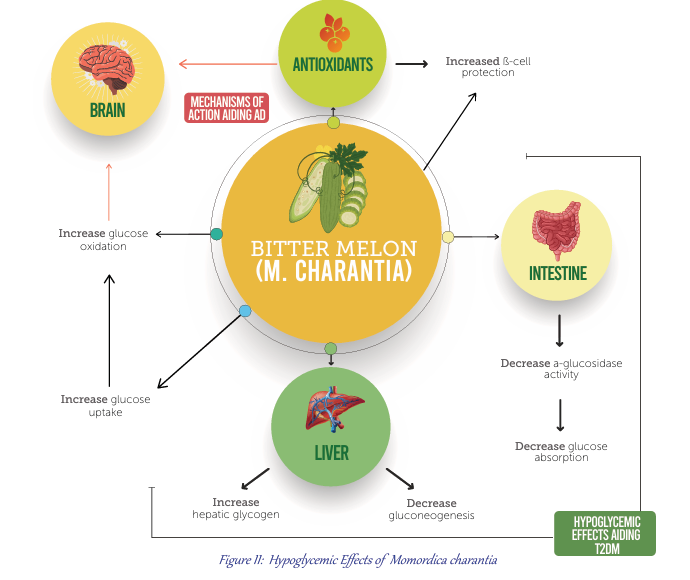
Current diabetes medications utilize the insulin and oral hypoglycemic effects within M. cha rantia to control T2DM and other metabolic conditions. Metformin, one of the most popular diabetic medications, is one of them. This med ication lowers blood sugar levels by improving insulin sensitivity. M. charantia maintains the same hypoglycemic effects as metformin; it promotes insulin secretion, improving glucose uptake by adipose or muscle tissues, and in hibiting glucose absorption from the intestines and glucoseproduction from the liver, whereas consuming M. charantia or its extracts can present the same effects with far fewer side effects.
Current research exemplifies the potential use of M. charantia as a more recognizable tool for T2DM and AD prevention and treatment, as it is the most accepted hypoglycemic plant. M. charantia maintains hypoglycemic effects through antioxidant effects promoting ß-cell protection, the decrease in glucose absorption from the intestines and glucose production from the liver, and improved glucose uptake by adipose or muscle tissues, thus affecting the brain as well due to glucose being its main energy source as illustrated in Figure II.
Although bitter melon’s potential as a replacement therapy for traditional medicine still needs further clinical research, the result of current research looks promising.

